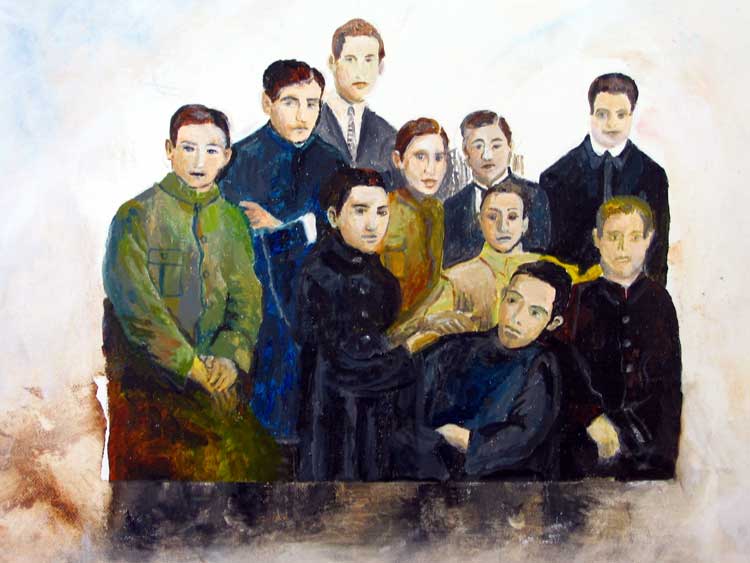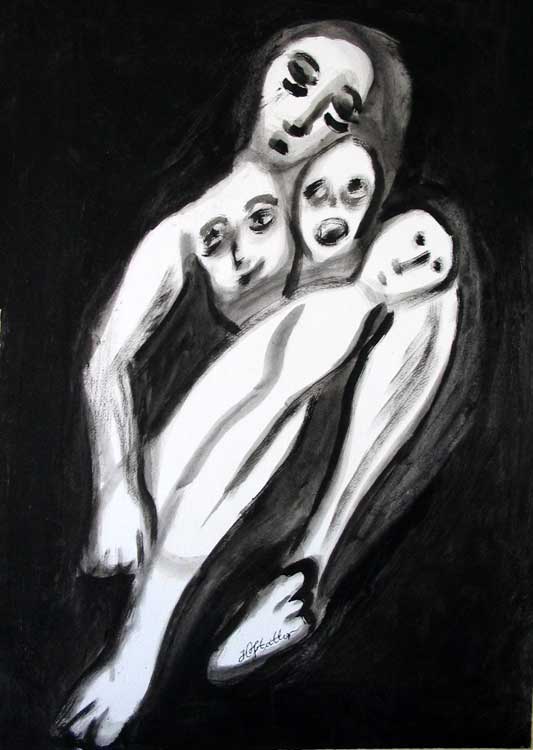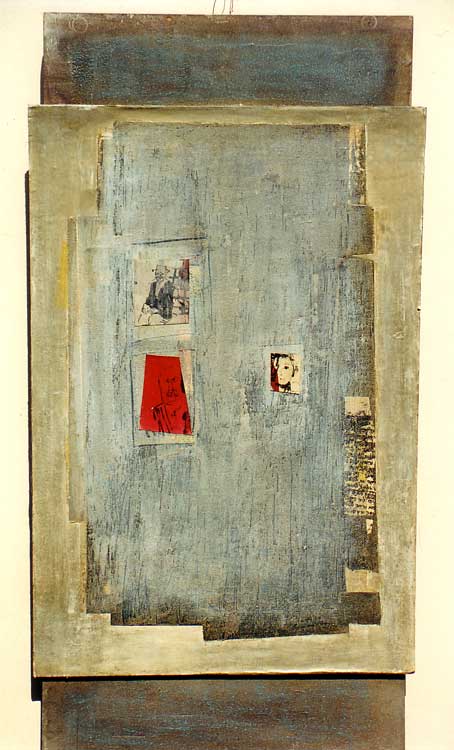.
.
.
.
.
.
.
.
.
.

. . . .
. .
![]() . . .
. . . 2.5.2005
>>23.5.2005
. . .
. . . 2.5.2005
>>23.5.2005


.
.
.
.
.
.
.
.
.
Sixty Years, Six Million
Osias Hofstatter –
Pinhas Golan – Sonia Gurfein
Opening: Monday, 2 May 2005, 8 p.m.
Closing: 23 May 2005
Artists Osias Hofstatter, Pinhas Golan, and Sonia Gurfein were very young
when the Second World War broke out. They were still very young when it
ended sixty years ago.
Osias Hofstatter was born in 1905 in Poland and passed away in 1995. On the centenary of his death we present the portraits he painted throughout his life: portraits of people with whom he lived in the camps in moments of suffering and humiliation, others with whom he shared years of youthful na´vetÚ, and yet others who surrounded him in years of daily routine, years in which he continued to paint portraits conveying compassion, hope, fear, solace, despair, danger, love, and loyalty. His paintings in those years were extracted from the memory of images etched deep in his heart.
Sonia Gurfein was born in Poland in 1927. She was twelve when the war broke out. Gurfein paints portraits after photographs of families unrelated to her, which assume a new colorful and expressive interpretation. She documents mundane scenes in painting; a group portrait of blank faces that form a frozen point in time (the figures appear to be waiting to be brought back to life). These people live exclusively on canvas, but even here, their faces convey grief, as if well-aware of the fate awaiting them in the near future. These people are foreign to her, yet share her own fate. Gurfein acquired the photographs from the family album of a man whom she met in Israel after the war.
Pinhas Golan was born in Poland in 1924. He was fifteen when the Second World War broke out. Golan entitles the totality of his works The Blocked Gate. The group of portraits presented in the current exhibition is dubbed Portraits after the Blocked Gate – a theme that has become the focal concern of his life after the war, and ever since.
"The portraits of The Blocked Gate represent the conflict between the urge to present them and the desire to highlight their absence… For essentially, they were all underlain by figures, albeit missing figures. Therefore in The Blocked Gate I introduce this absence as the major theme," the artist attests.
The Office in Tel Aviv Gallery is known as a venue for installations and experimental art. Marking sixty years of memory, this year I decided to make an exception and commemorate Holocaust Remembrance Day. As the daughter of Holocaust survivors and out of loyalty to the history of my people and to human dignity, we present a modest exhibition of portraits spawned by pain and the need to live with the absence and lack. Those who perished left behind an unwritten will, entrusting their memories to the living.